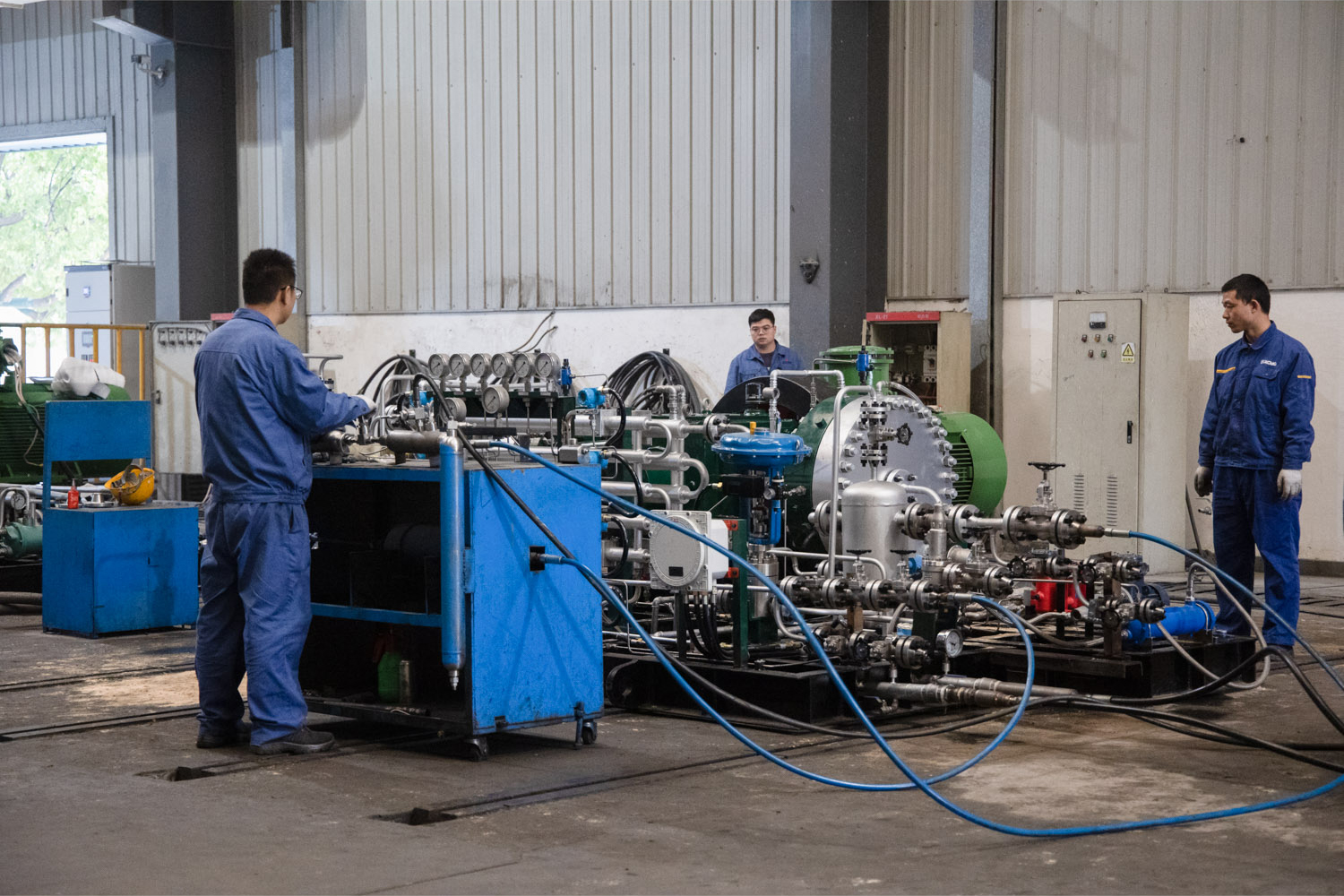In industries where flammable gases like hydrogen, natural gas, or process chemicals are handled, operational safety transcends compliance—it becomes an ethical imperative. Diaphragm compressors address this challenge through intrinsically safe engineering principles, combining physical barriers, intelligent monitoring, and passive safeguards to neutralize explosion risks at their source.
The core safety innovation lies in absolute isolation. A hermetically sealed metal diaphragm—crafted from high-strength alloys—creates an impermeable barrier between the compressed gas and mechanical components. This eliminates lubricant contamination while preventing explosive mixtures from forming. Complementing this, explosion-certified motors and intrinsically safe electrical systems (conforming to ATEX/IECEx standards) ensure no sparks or thermal hotspots ignite volatile media, even in gas-rich environments.
Beyond prevention, real-time threat interception forms the second pillar of protection. Multi-stage sealing architectures work in tandem with micro-sensor networks that continuously track gas integrity, pressure anomalies, and temperature excursions. Should sensors detect membrane fatigue or ppm-level leaks, automated shutdown protocols engage within milliseconds—far faster than human reaction times. This seamless transition from detection to action transforms risk management from reactive to predictive.
Passive safety elements provide critical redundancy. Dual overpressure relief valves and rupture discs dissipate energy during abnormal surges, while advanced thermal management systems maintain critical components below 40% of the autoignition temperatures of handled gases. Electrostatic risks are neutralized through conductive materials and rigorous grounding protocols (<1Ω resistance), eliminating hidden ignition sources.

Validation against global standards underpins these technologies. Compliance with frameworks like ATEX Directive 2014/34/EU (Zone 0/1/2), IECEx Scheme, and ASME BPVC Section VIII certifies readiness for extreme environments—from hydrogen refueling stations to pharmaceutical API synthesis. Each certification represents thousands of hours of validation testing under simulated failure conditions.
Ultimately, diaphragm compressor safety merges materials science, systems engineering, and digital vigilance. It’s a philosophy where every seal, sensor, and relief valve exists not merely to meet regulations, but to ensure that when compressing volatile media, the margin between operation and catastrophe remains eternally absolute.
Post time: May-30-2025

